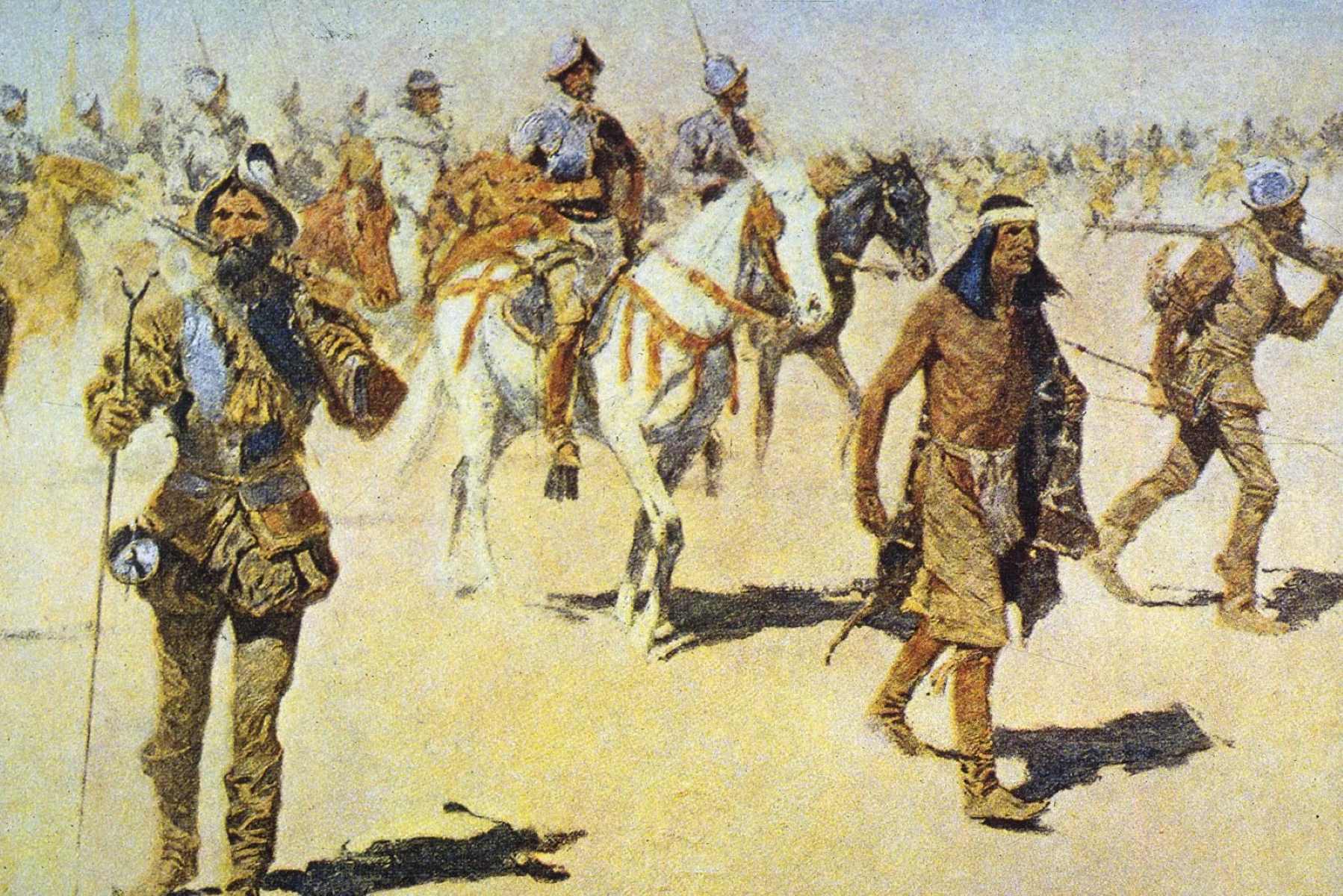Mystery Sites Of The Coronado Expedition

Have you ever wondered about the mystery sites of the Coronado Expedition? This historic journey, led by Francisco Vázquez de Coronado in the 1540s, aimed to find the fabled Seven Cities of Gold. Instead, it uncovered vast landscapes and cultures across the American Southwest. From the deserts of Arizona to the plains of Kansas, Coronado's path remains a topic of intrigue. Many of the exact locations visited by Coronado's men are still debated by historians today. Join us as we explore these enigmatic sites, piecing together clues from history to understand where Coronado and his men might have traveled.
The Coronado Expedition: A Journey Through History
The Coronado Expedition of 1540-1542, led by Francisco Vázquez de Coronado, sought the mythical Seven Cities of Gold. This journey took explorers through vast and varied landscapes, leaving behind a trail of mystery and intrigue. Here are some of the most fascinating sites associated with this historic expedition.
1. Cíbola: The First Encounter
Cíbola, often identified with the Zuni Pueblo in New Mexico, was the first major settlement encountered by Coronado's expedition. The explorers expected to find cities of gold but were met with adobe villages instead.
- Zuni Pueblo: This ancient village still stands today, offering a glimpse into the lives of the Zuni people. Visitors can explore traditional crafts, ceremonies, and the unique architecture that baffled the Spanish explorers.
2. The Grand Canyon: An Unexpected Discovery
During their quest, Coronado's men stumbled upon the Grand Canyon, a natural wonder that left them in awe. This discovery marked one of the first European encounters with the canyon.
- South Rim: The South Rim of the Grand Canyon provides breathtaking views and numerous hiking trails. It's a must-visit for anyone wanting to experience the grandeur that astonished Coronado's men.
3. Quivira: The Elusive City of Gold
Quivira, believed to be in present-day Kansas, was another target of the expedition. Coronado's search for this city of gold led him deep into the Great Plains, only to find simple grass-thatched villages.
- Coronado Heights: Located near Lindsborg, Kansas, this hill offers panoramic views and a stone castle built in the 1930s. It's a tribute to Coronado's quest and a great spot for picnics and hiking.
4. Tiguex Province: The Winter Camp
The Tiguex Province, near present-day Albuquerque, New Mexico, served as the winter camp for Coronado's expedition. This area witnessed significant conflict between the Spanish and the native Tiwa people.
- Coronado Historic Site: This site includes the ruins of Kuaua Pueblo and a museum showcasing artifacts from the expedition. Visitors can learn about the interactions between the Spanish and the indigenous people.
5. Hawikuh: The Battle Site
Hawikuh, another Zuni Pueblo, was the site of a significant battle between Coronado's forces and the Zuni people. This encounter marked the beginning of a series of conflicts during the expedition.
- Hawikuh Ruins: These ruins offer a haunting reminder of the clash between cultures. Exploring the site provides insight into the challenges faced by both the Zuni and the Spanish.
6. Pecos Pueblo: A Cultural Crossroads
Pecos Pueblo, located in New Mexico, was a major trading center and cultural hub. Coronado's expedition visited this site, which played a crucial role in the region's history.
- Pecos National Historical Park: This park preserves the ruins of Pecos Pueblo and offers guided tours, hiking trails, and a visitor center. It's an excellent place to learn about the rich history of the area.
7. The Llano Estacado: A Vast Plateau
The Llano Estacado, or Staked Plains, is a vast plateau that Coronado's expedition crossed. This challenging terrain tested the endurance of the explorers.
- Caprock Canyons State Park: Located in Texas, this park features rugged landscapes, hiking trails, and wildlife. It's a great place to experience the harsh environment that Coronado's men faced.
8. The Rio Grande: A Lifeline
The Rio Grande River provided a crucial water source for Coronado's expedition. This river has been a lifeline for countless generations, shaping the cultures and communities along its banks.
- Rio Grande Nature Center State Park: Situated in Albuquerque, this park offers walking trails, bird watching, and educational exhibits. It's a peaceful spot to reflect on the historical significance of the river.
9. The Palo Duro Canyon: A Hidden Gem
Palo Duro Canyon, located in Texas, is the second-largest canyon in the United States. Coronado's expedition passed through this stunning landscape, which remains a hidden gem for many travelers.
- Palo Duro Canyon State Park: This park offers camping, hiking, and horseback riding. The dramatic scenery and rich history make it a must-visit destination.
10. The Pecos River: A Natural Barrier
The Pecos River presented a natural barrier for Coronado's expedition. Crossing this river was a significant challenge, but it also provided much-needed water and resources.
- Pecos River Recreation Area: Located in New Mexico, this area offers fishing, boating, and picnicking. It's a great spot to enjoy the natural beauty that once challenged Coronado's men.
Discovering History's Hidden Gems
The Coronado Expedition left behind a trail of mystery sites that continue to captivate historians and travelers alike. These locations offer a unique glimpse into the past, revealing stories of exploration, ambition, and cultural exchange. Visiting these sites not only enriches our understanding of history but also provides an adventure for those eager to step back in time. From the ancient ruins to the vast landscapes that Coronado and his men once traversed, each site holds a piece of the puzzle that is the expedition's legacy. Whether you're a history buff or just someone looking for a unique travel experience, these hidden gems are worth exploring. So pack your bags, grab a map, and set out to uncover the secrets of the Coronado Expedition. The journey promises to be as enlightening as it is exciting.

